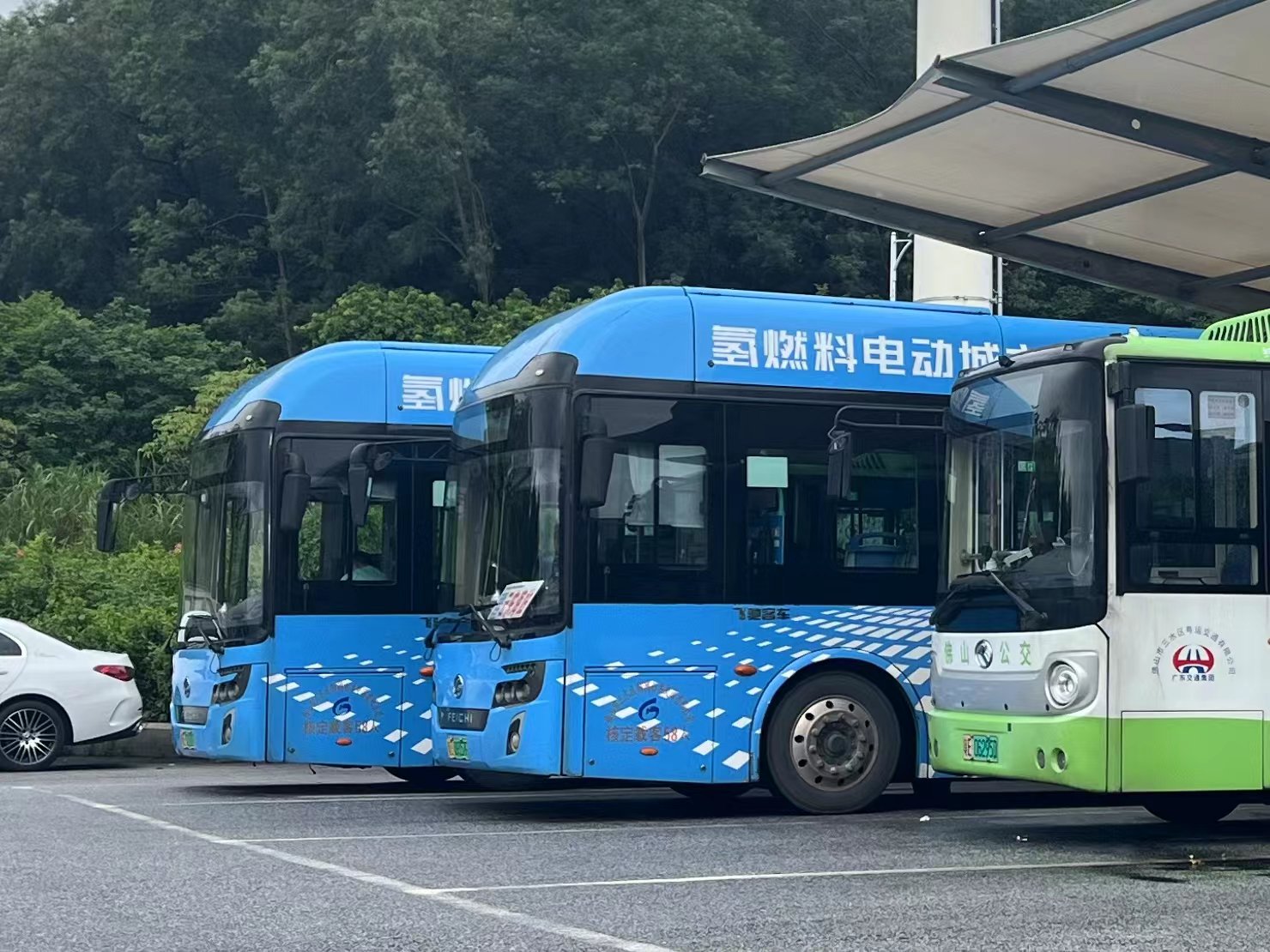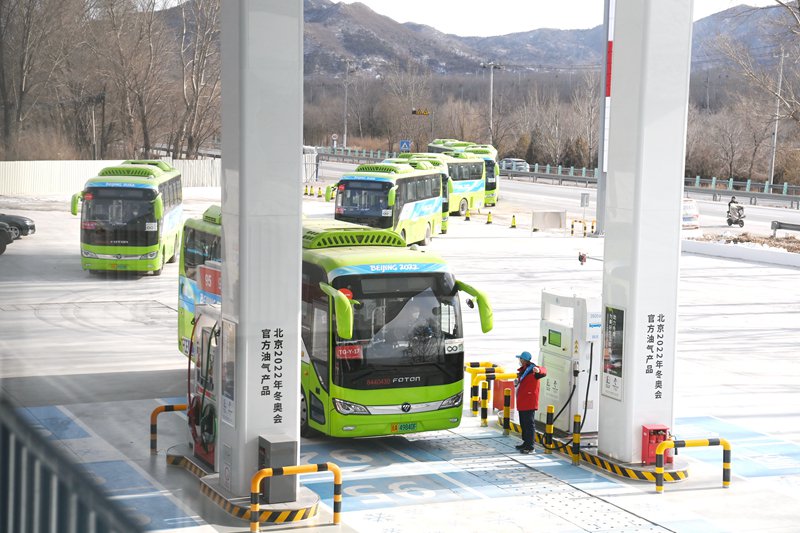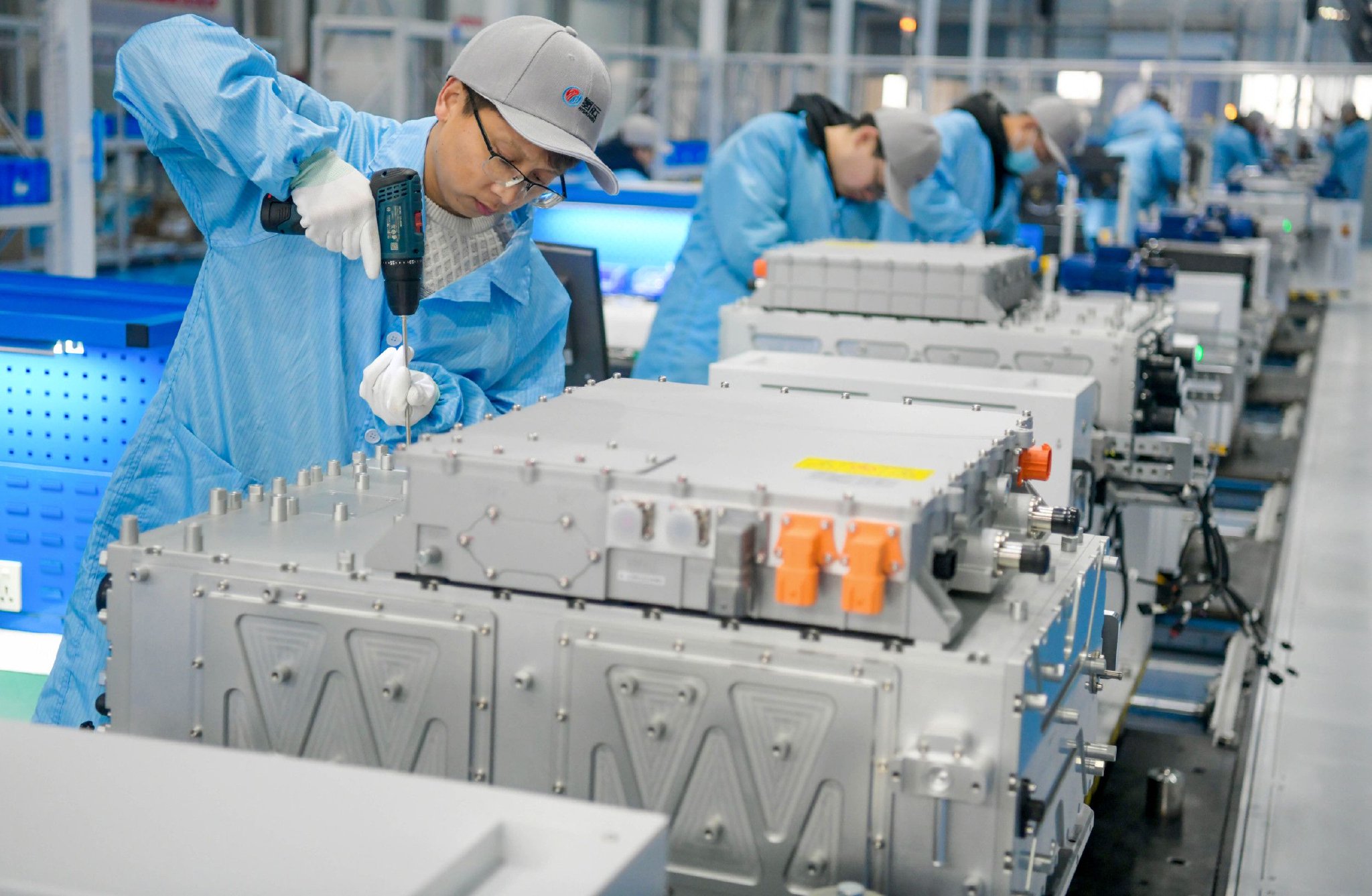Some investors lack a clear understanding of the hydrogen fuel cell industry’s early stage. Many enter with a “quick profit” mentality. When the market fails to deliver fast returns, they struggle. Li Yi is a project manager at a core component manufacturer for hydrogen fuel cell systems. He told reporters that the company cut its workforce by about 20% this year. Salary payments also faced delays. Li Yi noted that hydrogen vehicles are still in the “starting” and “climbing” phases. The industry has limited market space and few application scenarios. As a result, the company’s products do not sell. According to data from the China Association of Automobile Manufacturers, in 2023, the total production and sales of hydrogen fuel cell vehicles reached only 5,631 and 5,791 units, respectively. Yet, over a hundred manufacturers provide fuel cell systems for these vehicles.
Li Yi’s company faces a large amount of long-term accounts receivable. Financing options are becoming harder to access. The company’s funds are tightening. Recently, reporters from Yicai found that many businesses encounter similar challenges. Some investors lack a clear understanding of the nascent hydrogen fuel cell industry. Others enter with a “quick profit” mindset. When the market fails to deliver fast returns, they find themselves in trouble. Current Situation Nanhai District in Foshan is a key base for China’s hydrogen fuel cell industry, housing over 100 related companies. However, many locals told reporters they rarely encounter hydrogen fuel cell vehicles, aside from seeing a few buses on the road. A hydrogen fuel cell converts the chemical energy of hydrogen and oxygen into electricity. Its basic principle is the reverse reaction of water electrolysis. Key application areas include transportation, aerospace energy, energy storage, and rail transit. In China, the main application of hydrogen fuel cells is in hydrogen fuel cell vehicles. Although there are no official industry statistics on market share, respondents indicated that over 90% of hydrogen fuel cells are used in vehicles. For example, Li Yi’s company produces core components for hydrogen fuel cell systems, all applied in vehicles. 2018 marked the beginning of China’s hydrogen fuel cell industry development. In 2021, the Ministry of Finance and four other ministries approved hydrogen fuel cell vehicle demonstration projects in five cities: Beijing-Tianjin-Hebei, Shanghai, Guangdong, Zhengzhou, and Hebei.
Hydrogen fuel cell vehicles have not yet matured or become widespread. The industry remains in a demonstration phase. Many companies report that the hydrogen fuel vehicle market is struggling. They say, “The cars are too expensive, and the market won’t buy.” Xiongchuan Hydrogen Energy Technology Co., Ltd. manufactures hydrogen fuel cell vehicles and operates them. Insiders say their hydrogen fuel cell dump trucks cost twice as much as diesel dump trucks of the same tonnage. This significantly increases the initial investment burden. Additionally, hydrogen fuel costs more than diesel, raising operational costs. These factors extend the cost recovery period for the 200 vehicles, making it hard to predict. For example, Xiongchuan’s 31-ton hydrogen fuel cell dump truck costs 1.2 million yuan. Even after a 330,000 yuan (46260$) subsidy, its cost remains 200,000 to 300,000 yuan (42050$) higher than similar diesel vehicles. During company visits, reporters often heard that the hydrogen fuel cell industry lacks maturity. The supply chain and technology need improvement. There are clear deficiencies in cost, materials, and technology. At a hydrogen fuel cell bus station in the south, drivers reported poor experiences. They said, “The experience is bad,” “There are many problems,” and “There’s always maintenance anxiety.” Li Chancheng, former head of the country’s first operational hydrogen refueling station, told reporters that high hydrogen prices and supply instability limit market development. He noted many challenges in production, storage, transportation, and refueling. For instance, refueling stations are built in chemical parks to serve demonstration vehicles, not daily operational ones. “From this perspective, the development of the hydrogen fuel cell vehicle industry has a long way to go,” Li said. According to statistics from the Gaogong Hydrogen Power Industry Research Institute, the total sales of hydrogen fuel cell vehicles reached 7,478 in 2023, a 49.4% increase year-on-year. However, these vehicles came from 96 hydrogen fuel cell system manufacturers, with only 15 supplying over 100 vehicles. By the first half of 2024, the registration sales reached 2,490 vehicles, a 10.6% increase year-on-year. However, the number of manufacturers producing over 100 vehicles dropped to six. According to data from the China Automobile Association, from 2015 to the first half of 2024, the cumulative production and sales of hydrogen fuel cell vehicles nationwide were 21,267 and 20,740 units, respectively. This averages just over 2,000 units per year over the past decade. This figure seems trivial compared to the large production capacity plans. Zheng Xianling, a strategic advisor at CIMC Group, has long studied the hydrogen fuel cell industry. In an article published in April, she revealed that the production capacity of domestic hydrogen fuel cells could support over 300,000 vehicles. “However, the actual annual shipment volume is currently less than 10,000 units.” “This year, the development of hydrogen fuel cell vehicles only maintains demonstration operations and product validation. It has not formed a scalable, industrialized business model,” Zheng Xianling told a reporter from Yicai. Funding pressure exists. An industry observer pointed out that not only hydrogen fuel cell vehicles but the entire hydrogen energy sector is far from reaching a mature, widely commercial stage. The focus should be on technological research and improvement, rather than “inopportunely” seeking quick market returns. “The market has not formed yet. How can one think of reaping the rewards?” This misalignment in thinking relates to some entrants’ misjudgment of the industry. In 2018, the Ministry of Finance and other departments issued a notice adjusting the financial subsidy policy for new energy vehicles. While subsidies for other new energy models significantly decreased, hydrogen fuel cell vehicles continued to receive substantial financial support. This policy gradually declined only by 2020, reflecting the high expectations at that time. With various favorable policies continuously released, more companies entered the hydrogen fuel cell industry. Data from Tianyancha shows that from 2017, the registration of hydrogen-related companies increased. By July 2024, nearly 4,000 hydrogen-related companies existed. Currently, among the 31 provinces in the country, 27 have issued provincial hydrogen fuel cell industry plans.
Gu Jun leads a core component manufacturing company for hydrogen fuel cell systems. He often hosts government investment teams in his office. This year, about 20 teams visited his company. Some even offered prime land for workshops. These teams come from both developed and underdeveloped areas. Many enter the market seeking quick profits. They focus too much on policy benefits and too little on industry characteristics. They ignore the industry’s long cycles. When expectations fail, they face operational difficulties. Many interviewed companies report significant financial pressure. A notable phenomenon is the dilemma between orders and funding. “When we have orders, we hesitate to accept them,” Li Yi admits. Initial project investments are huge, often exceeding one million yuan. Even signed contracts can face payment delays if clients’ financial situations fluctuate. “This happens frequently now.” Li Yi reveals that the company struggles with massive accounts receivable, totaling tens of millions. This amount nearly equals half of last year’s total revenue and has aged nearly two years. Some receivables stem from hydrogen fuel cell system components, while others come from manufacturing equipment. These large receivables severely hinder daily operations, R&D investments, and new projects, slowing the company’s rapid growth. Faced with financial pressure, the company must lay off employees and adjust its business model. Previously, they trusted clients’ credit. After receiving a small advance, they quickly started production. Current market changes and uncertain customer payment abilities force the company to adopt a more conservative strategy. They now require over 60% prepayment as a prerequisite for project initiation. This approach helps reduce financial pressure and lower default risks. Several executives reported that before 2023, financing was relatively easy. Companies felt confident and expanded production lines. Some even advanced funds to clients, neglecting internal management. This led to some projects now failing to recover any money. Now, financing has become increasingly difficult. Tight funds make it harder to secure financing. Investors are more sensitive to risks. Gu Jun noted a recent example. They expected to secure venture capital, but after a brief discussion, investors realized the industry needed at least five more years to show results. They ultimately decided to withdraw their investment. The venture capital firm’s main demand is clear: invest this year and expect returns next year. An industry insider recalled a moment in 2019, when hydrogen energy was booming. He and the company chairman made a swift decision to invest 50 million yuan in a promising hydrogen fuel cell company based on brief insights at an industry forum. Two years ago, Gu Jun’s company easily secured a bank loan of over 10 million yuan, enjoying three years of interest-free benefits. Banks were accommodating then. The entire process took only two to three months. Now, loan approval times have significantly increased, and standards have tightened. Gu Jun has had to abandon bank loans for funding. He observed that increased macroeconomic uncertainty makes investors more cautious, especially in the hydrogen fuel cell sector, which is still developing and has long cycles. Investors now prefer projects that can generate quick returns with relatively low risks. This year, Gu Jun adopted a strategy to reduce production scale and slow down company growth. Concerns and Expectations Hydrogen fuel cell vehicles hold the promise of transforming energy structures, upgrading the automotive industry, and protecting the environment. They were once seen as darlings of the new energy sector. The China National Institute of Standardization and the National Hydrogen Energy Standardization Technical Committee published the “Blue Book on the Development of Hydrogen Energy Industry Infrastructure in China.” They predict that by 2030, the number of hydrogen fuel cell vehicles will reach 2 million, accounting for about 5% of total vehicle production. China is expected to become the world’s largest market for hydrogen fuel cell vehicles, with industry output likely to exceed one trillion yuan. However, the hydrogen fuel cell vehicle industry shows an increasing reliance on policy support. Some respondents noted a widespread overly optimistic expectation regarding favorable policies. Although policy guidance is clear, delays and inadequacies in execution hinder companies from receiving expected support, leading to frequent setbacks in strategic planning. In September 2020, the Ministry of Finance and the Ministry of Industry and Information Technology jointly issued a notice on the demonstration application of fuel cell vehicles, with a tentative demonstration period of four years, ending in 2024. “However, this policy cycle is expected to last until 2025,” Li Chengcheng told reporters. As for policies after 2026, none have been announced, creating uncertainty for businesses. According to Zheng Xianling, from 2010 to 2022, electric vehicles received over 200 billion yuan in subsidies and still enjoy tax exemptions. In contrast, under the “subsidy-for-award” policy for hydrogen fuel cell vehicles, the total subsidies amount to only 21.25 billion yuan. Moreover, core component manufacturers can only receive government subsidies after the vehicles reach target mileage. Funding for the development of the hydrogen fuel cell vehicle industry remains tight. But companies still expect policy support.
Last year, Zou Yuquan, CEO of Hongji Chuangneng Technology Co., expressed to First Financial reporters that the main goal is to reduce costs quickly. He aims to break the excessive reliance on subsidies. He believes that hydrogen fuel cell vehicles must move toward marketization. This will encourage end users to pay for and use hydrogen vehicles, allowing the industry to thrive. Specifically, he wants to keep the price of a 49-ton hydrogen fuel cell truck at around 800,000 yuan (112140$) and passenger cars at about 350,000 yuan (49060$). He also aims for hydrogen prices to be 25 yuan (0$) per kilogram. This is the first step to ensure market operations. “I still hold this view,” he stated.


